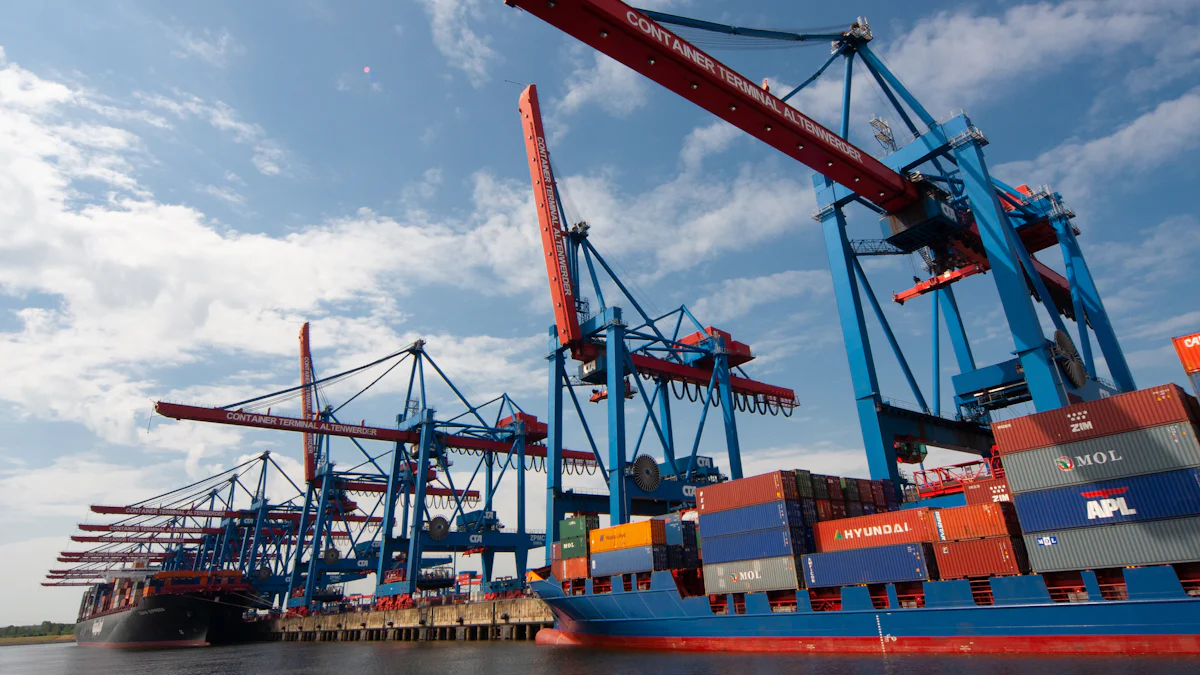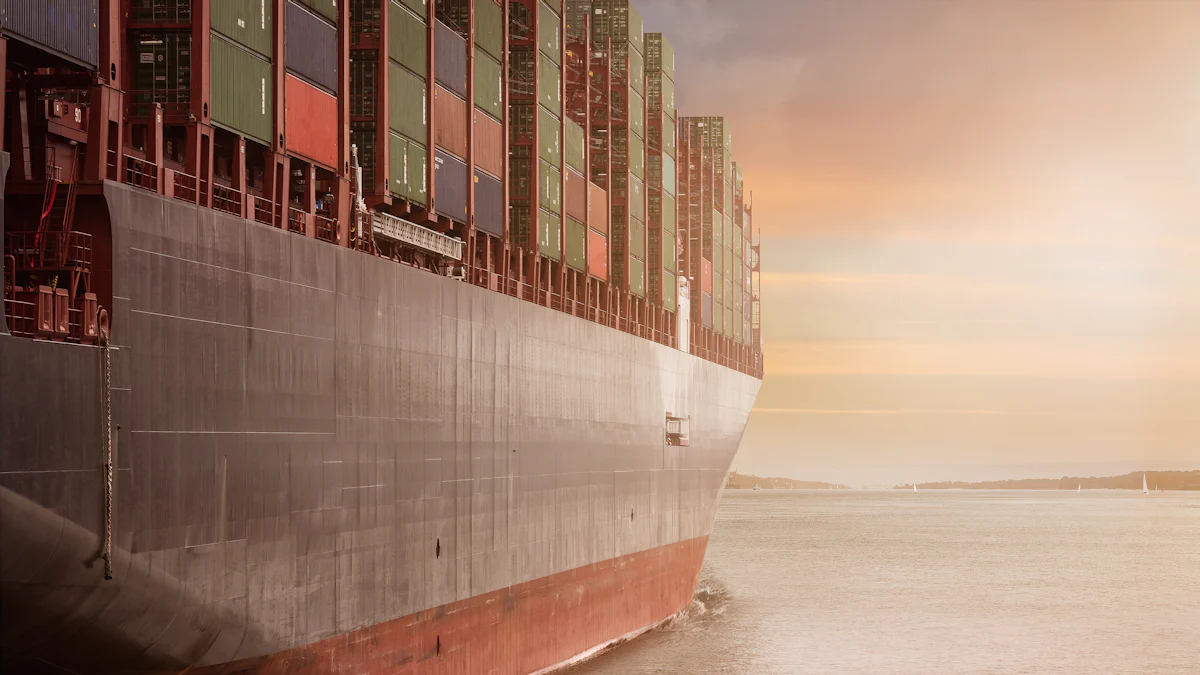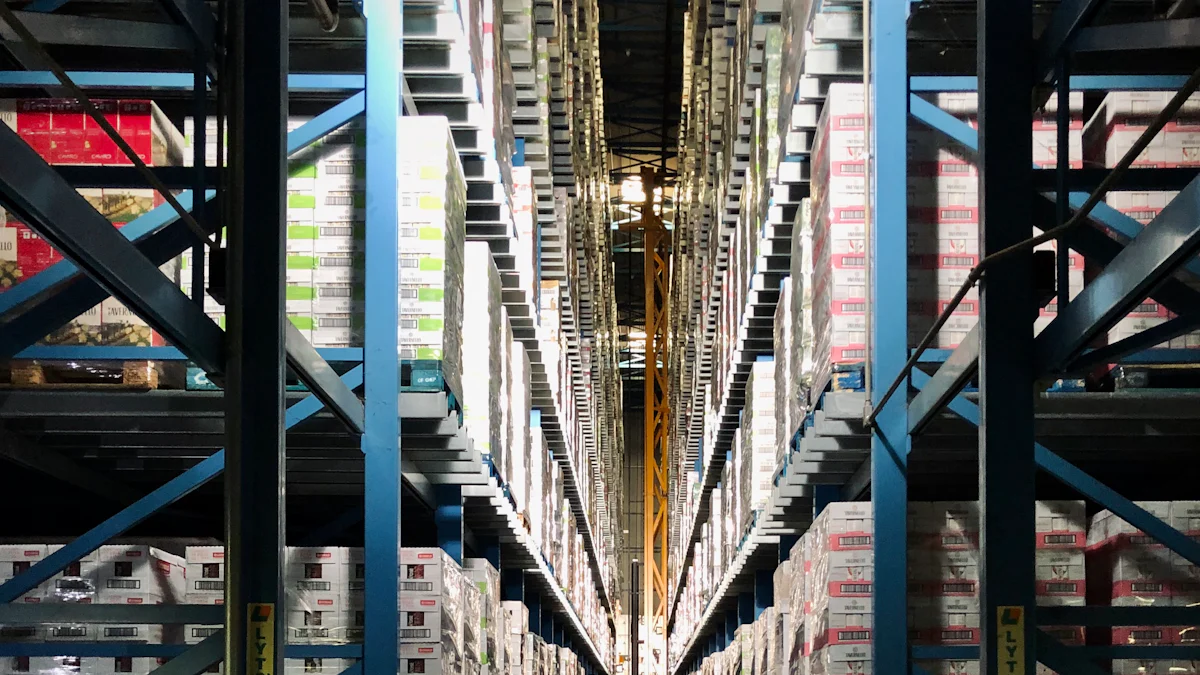Inflation Insights: Navigating Supply Chain Disruptions

Understanding supply chain disruptions is crucial in today's economic landscape. These disruptions have a direct impact on inflation rates, contributing significantly to the rise in prices over the past two years. In this blog, we will delve into the repercussions of supply chain disturbances on inflation, explore the key factors driving these disruptions, and discuss effective strategies to navigate through these challenges successfully.
The Impact of Supply Chain Disruptions

When supply chain disruptions occur, they have far-reaching consequences on the economy. These disruptions lead to increased inflationary pressures and affect corporate profits, creating a ripple effect across various industries.
Economic Consequences
Inflationary Pressures
Supply chain disruptions have been a key driver of inflation in recent years. They have significantly impacted the cost of goods production and raised public expectations for higher prices. This surge in inflation, starting from early 2021, can be attributed to supply chain pressures accounting for about 60% of the overall increase. As these disruptions began to ease in mid-2022, there was a noticeable slowdown in inflation rates.
Corporate Profits
The impact of supply chain disruptions extends beyond consumer prices; it also affects corporate profits. When supply chains are disrupted, companies face challenges in sourcing raw materials and components efficiently. This leads to increased production costs and reduced profit margins. Consequently, businesses need to adapt their strategies to mitigate these disruptions and maintain profitability.
Consumer Impact
Price Increases
One of the most direct consequences of supply chain disruptions is the rise in prices faced by consumers. As input costs increase due to supply chain issues, these additional expenses are often passed on to customers through higher retail prices. This results in a strain on household budgets and purchasing power, affecting overall consumer sentiment.
Product Availability
In addition to price increases, consumers also experience challenges related to product availability during supply chain disruptions. Delays in production and distribution processes can lead to shortages of essential goods or longer waiting times for certain products. This scarcity further exacerbates consumer concerns and contributes to market uncertainties.
Causes of Supply Chain Disruptions
Natural Disasters
Natural disasters play a significant role in disrupting supply chains, leading to widespread economic repercussions. From hurricanes to earthquakes, these catastrophic events can halt production, damage infrastructure, and disrupt transportation networks. For instance, the Great East Japan Earthquake in 2011 caused severe disruptions to global supply chains, affecting industries worldwide. The aftermath of such disasters often results in order backlogs, delayed shipments, and increased lead times for essential goods.
Natural disasters like hurricanes and earthquakes can cripple supply chains.
Production halts and damaged infrastructure are common outcomes.
The Great East Japan Earthquake in 2011 had a profound impact on global supply chains.
Order backlogs and delayed shipments are typical consequences.
Global Health Pandemics
The outbreak of global health pandemics, such as the Covid-19 pandemic, has highlighted the vulnerabilities within supply chains on a global scale. The pandemic led to factory closures, production disruptions, transportation issues, trade restrictions, and demand volatility. These disruptions reverberated across industries, causing widespread shortages and delays in the delivery of goods. As a result, businesses were forced to reevaluate their sourcing strategies and enhance their resilience against future crises.
Global health pandemics like Covid-19 expose weaknesses in supply chains.
Factory closures and production disruptions were prevalent during the pandemic.
Transportation issues and trade restrictions added complexity to supply chain operations.
Businesses faced challenges due to demand volatility and shortages.
Political Uncertainty
Political uncertainty, particularly driven by factors like trade wars and geopolitical tensions, can significantly impact global supply chains. Trade wars between major economies have led to tariffs, sanctions, and trade barriers that disrupt established trading relationships. These conflicts create uncertainty around import/export regulations and can result in sudden changes to sourcing strategies. Geopolitical events further exacerbate these challenges by introducing instability into international trade agreements.
"Trade wars disrupt established trading relationships with tariffs and sanctions."
"Uncertainty around import/export regulations arises from political tensions."
"Geopolitical events introduce instability into international trade agreements."
Strategies to Navigate Supply Chain Disruptions

In the realm of supply chain disruptions, businesses must adopt strategic measures to navigate through turbulent times successfully. By implementing robust strategies, organizations can enhance their resilience, foster collaboration within the industry, and leverage technological solutions to mitigate the impact of disruptions effectively.
Building Resilience
To withstand the challenges posed by supply chain disruptions, companies must prioritize building resilience in their operations. One key approach is through diversification of suppliers. By engaging with multiple suppliers across different regions, businesses can reduce dependency on a single source. This diversification strategy helps mitigate risks associated with supplier failures or transportation delays, ensuring continuity in the supply chain.
Engaging with multiple suppliers across different regions reduces dependency on a single source.
Diversification strategy mitigates risks associated with supplier failures or transportation delays.
Collaborative Approaches
Embracing collaborative approaches is essential for navigating supply chain disruptions effectively. Establishing industry partnerships allows organizations to share resources, information, and best practices. Through collaboration, companies can pool their expertise to address common challenges and develop innovative solutions. Industry partnerships foster a sense of community and solidarity among stakeholders, enabling them to collectively tackle disruptions and drive sustainable growth.
Industry partnerships enable organizations to share resources, information, and best practices.
Collaboration fosters a sense of community and solidarity among stakeholders.
Technological Solutions
In today's digital age, leveraging supply chain management software is paramount for managing disruptions efficiently. This technology offers real-time visibility into the entire supply chain network, allowing businesses to identify bottlenecks and proactively address issues. Supply chain management software streamlines processes, enhances communication between partners, and automates routine tasks. By embracing technological solutions, companies can optimize their operations and respond swiftly to changing market dynamics.
Supply chain management software provides real-time visibility into the entire supply chain network.
Technology streamlines processes, enhances communication between partners, and automates routine tasks.
Future Outlook
Expected Trends
Companies must adapt to the evolving landscape of supply chain management.
Balancing resilience, agility, cost-effectiveness, and speed will be crucial for future supply chains.
The focus will shift towards enhancing customer satisfaction through efficient supply chain operations.
Continued Challenges
Supply chain disruptions are expected to persist, posing ongoing challenges for businesses worldwide.
Companies will need to proactively address issues related to sourcing, production, and distribution.
Maintaining operational efficiency amidst disruptions will be a key challenge for organizations.
Opportunities for Improvement
Innovation in supply chain management is essential for overcoming challenges and driving growth.
Embracing advanced technologies like AI and blockchain can enhance visibility and streamline operations.
Collaborative partnerships within the industry can foster innovation and create sustainable solutions.
Expert Testimony:
Gartner emphasizes the importance of balancing resilience, agility, cost-effectiveness, and speed in future supply chains to ensure customer satisfaction in the supply chain industry.
By staying ahead of emerging trends and leveraging innovative solutions, businesses can navigate through uncertainties and build robust supply chains that withstand disruptions effectively.
Maintaining a resilient supply chain is paramount for businesses to navigate disruptions effectively. By proactively managing risks and implementing robust strategies, companies can safeguard their operations, uphold customer satisfaction, and optimize financial performance. Supply chain disruptions have significant operational and financial implications, emphasizing the need for a well-crafted risk management plan tailored to specific networks. Embracing innovation in supply chain management enhances efficiency and cost-effectiveness, contributing to economic growth. True resilience lies in understanding the importance of anticipating disruptions and swiftly adapting to ensure a seamless supply chain operation.
